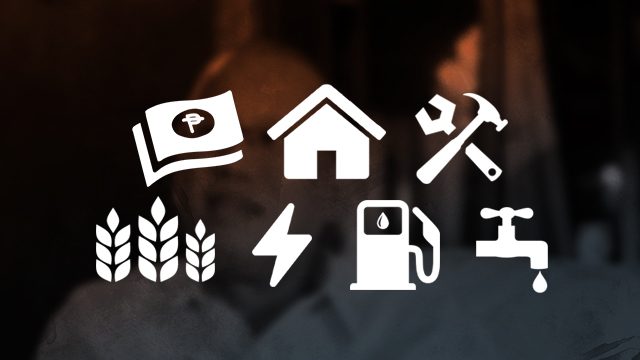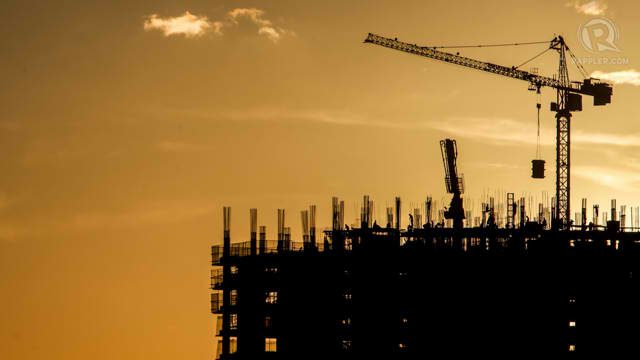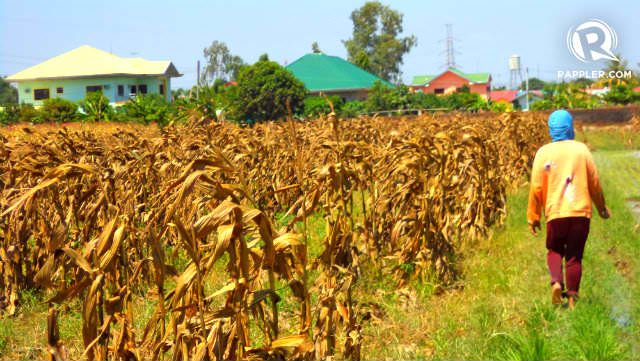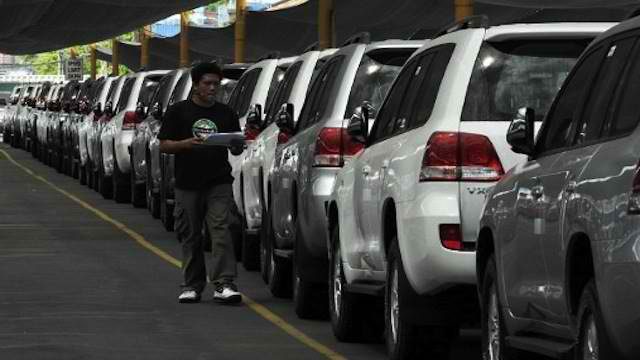SUMMARY
This is AI generated summarization, which may have errors. For context, always refer to the full article.

MANILA, Philippines – The Philippines has seen a rise in ride-sharing apps, a disrupted telecommunications industry, booming real estate, and a challenged utilities sector in the past 6 years.
The country’s turnaround – from being the perennial Sick Man of Asia to the fastest growing economy in the region – is President Benigno Aquino III’s claim to fame, though economists also point to the huge contribution of overseas Filipino workers to this end. (READ: Beyond the numbers: How Aquino fueled the economy)
Some industries benefited from the new business climate more than others.
Rappler talked to economists to assess the businesses that thrived and those that performed poorly under the Aquino administration, based on their gross domestic product (GDP) contribution from 2011 to 2015:
Thrived: Finance and Real Estate (8%)

For Ronilo Balbieran, a research associate from the Research, Education, and Institutional Development (REID) Foundation, the construction, finance, and real estate sectors grew together as “one ecosystem,” as their activities signal each other’s potentials.
“Moreover, the low interest rate regime – brought about by huge private sector savings coupled with low inflation environment – has actually encouraged more real estate development, whether it is residential, commercial, or retail,” Balbieran added.
This is validated by the strong growth of big banks Metrobank, Bank of the Philippine Islands (BPI), and BDO Unibank, as well as real estate giants Ayala Land, SM Development Corporation, Robinsons Land, Megaworld, and Vista Land.
The growth of the business outsource processing (BPO) sector has also fueled stronger growth in commercial real estate, Balbieran said.
BPI research officer Nicholas Antonio Mapa said real estate has been booming because of the easing credit cycle, and sustained overseas Filipino workers remittance flows. This is evident in the higher income reported by Ayala Land, DMCI, and even SM.
Thrived: Construction (7.5%)
During the first few years of the Aquino administration, public construction had a very slow start, due to Daang Matuwid (Straight Path) growing pains – the new government underspent on infrastructure as it reviewed some unimplemented but funded projects of its predecessor. This, however, was compensated by private construction.
Over the course of 6 years, it has been a waiting game for the public and private sectors to grow together.
“If we deduct the negative growth of construction in 2011, average growth of construction industry between 2012 and 2015 is at the 10% range,” Balbieran said.
The industry’s growth can be seen in the healthy and growing competition among construction companies like DMCI, Megawide, and Datem, as well as property developers like San Miguel Corporation, Ayala Corporation, and Metro Pacific Investments Corporation.
Thrived: Manufacturing (7%)
The roller-coaster exchange rate, leaning towards more depreciation, increased the purchasing power multiplier of the dollar inflows from OFW remittances, BPOs, and tourism, Balbieran said.
“The lower price of oil and improvement of roads throughout the 6 years have helped bring down the cost of logistics, and thus managed the low inflation across manufactured products,” he added.
Thrived: Transportation, communications, storage (6.6%)
Lower oil prices and the higher wage of workers under Aquino’s watch helped the transportation, communications, and storage (TCS) industries grow substantially.
“The air transport has really taken off since 2014 with double-digit growth rates (18% and 15%), and it seems it is there to stay as long as oil price is low. The local demand for tourism – greatly increasing by a massive average of 15% per year in the last 6 years – has really helped the TCS sector, particularly air travel, grow,” Balbieran said.
Performed poorly: Agriculture (1.7%)

Due to lack of connectivity and inadequate farm-to-market roads, the agriculture sector performed poorly under Aquino’s watch, the REID research associate said.
He added insufficient irrigation facilities, most especially during the last two years of El Niño, had also led to a decline in the sector’s performance. (READ: How can the Philippines have a booming agriculture sector?)
Performed poorly: Electricity, gas, and water (4%)
Lack of supply and strict regulations dragged the sector’s performance, according to some economists.
“Some companies in regulated industries did not do well,” said COL Financial Group vice president April Lynne Lee-Tan said.
“For example, Manila Water Company and Maynilad did not do well because both had issues in raising their tariffs. Metro Pacific also did not do well,” she added.
Performed well: Transport (8.3%)

In the past 6 years, the Chamber of Automotive Manufacturers of the Philippines, Incorporated, has reported historical highs in sales, just in time for the boom of ride-sharing apps.
“Every quarter, Toyota, Mistubishi, Honda, and others beat their previous records. Motorcycle sales are also through the roof as we scramble to find enough parking spaces and spend inordinate amounts of hours stuck in traffic,” BPI’s Mapa said in an e-mail correspondence.
For REID’s Balbieran, lower oil prices, which translated into cheaper airfare and land travel, led to increased transport demand.
What about jobs?
“One knock against Aquino has been that the recent growth trend has not translated into a strong job creation trend,” Mapa said.
A mismatch in job skills and lack of infrastructure are some of the problems incoming president Rodrigo Duterte has to address, to sustain economic growth.
Moving forward, Mapa and Balbieran said the Philippines will need to graduate to a more balanced growth model. There is no basis to rely solely on the services sector, the economists said. – Rappler.com
Add a comment
How does this make you feel?
There are no comments yet. Add your comment to start the conversation.